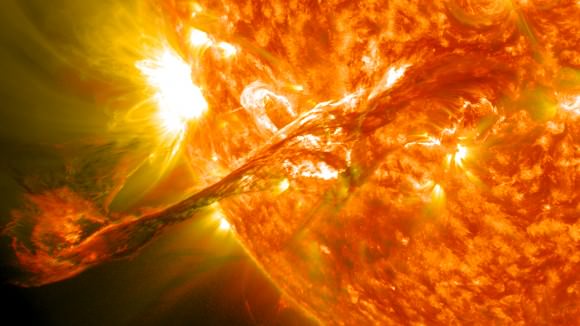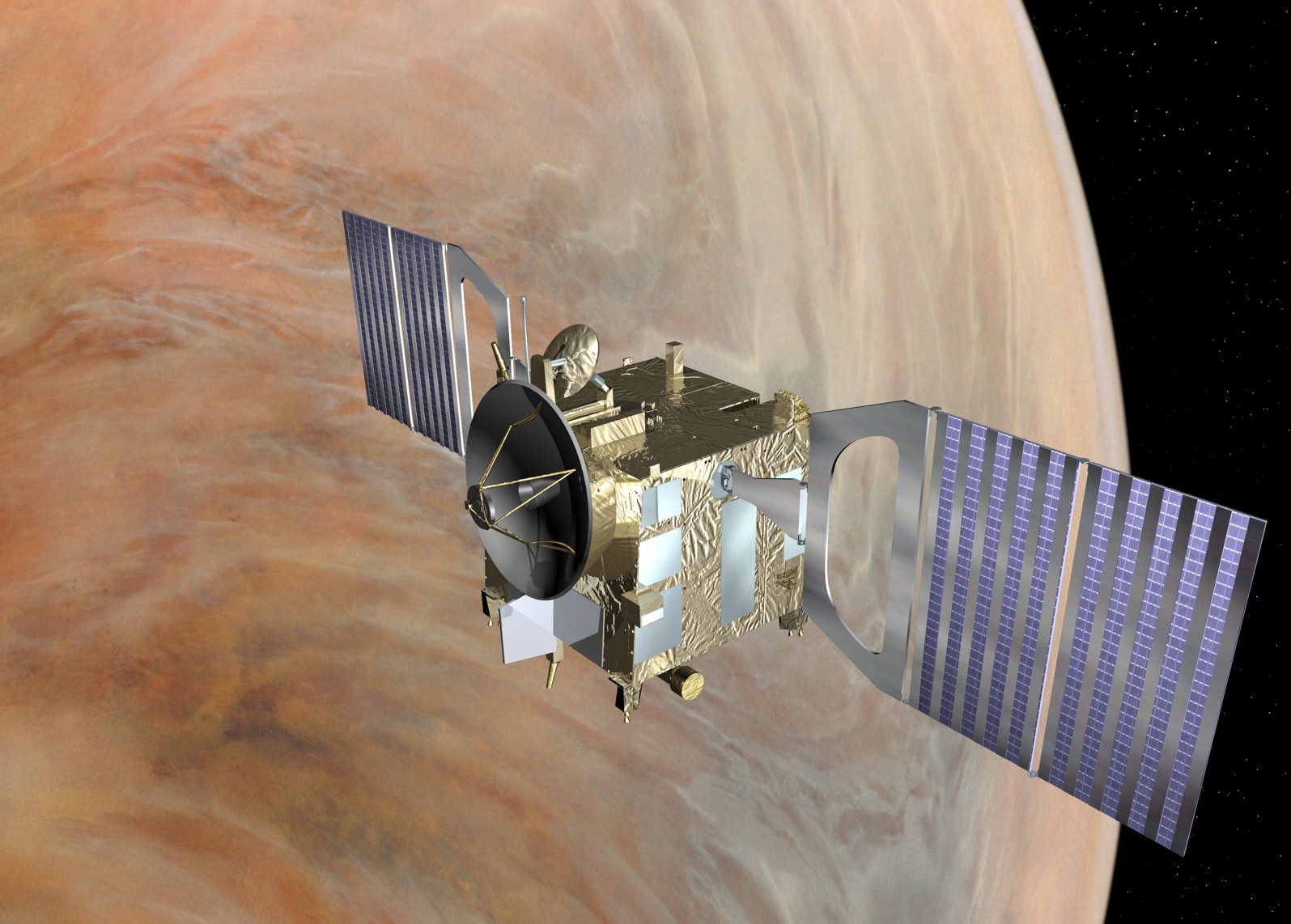Here’s another marvel of technology: there are people on Earth who are formulating solar weather forecasts … for Venus. While that sounds counterintuitive — isn’t the sun far away from that planet? — it actually does have a big effect on the planet’s atmosphere. And with Venus Express taking the plunge into the planet’s atmosphere, it’s important to know how the sun is behaving to predict its effect.
As the spacecraft skims the top of the planet’s atmosphere, it’s possible that if an extreme weather event occurs, this could change the orbit from what would be predicted.
“The space weather reports will … allow us to better understand anomalous behaviour that we may subsequently observe on the spacecraft,” stated Adam Williams, Venus Express’ deputy spacecraft operations manager.
“And in extreme cases, we would be more ready to react to a serious situation. For example, if our startrackers were to be overloaded by radiation.”
We’re used to regular solar weather reports on Earth, but getting them ready for Venus — a first — is a bit more difficult. The European Space Agency is using observatories such as the Solar Dynamics Observatory, the Solar and Heliospheric Observatory and the Proba-2 spacecraft, just like it does for Earth forecasts.

Venus presents an extra challenge, however, because it’s 59 degrees ahead of Earth in its orbit (as things stand right now) and there are no spacecraft in between the Sun and Venus to see how conditions change as particles head toward the planet. The updates are being issued through ESA’s Space Weather Coordination Centre in Belgium.
By the way, we’re also lucky enough to get weather forecasts for another planet — Mars! Malin Space Science Systems provides weekly weather reports from the Red Planet through the Mars Color Imager (MARCI) on the Mars Reconnaissance Orbiter. Here’s part of its report from between May 26 and June 1. (Be sure to click through the link to watch a recent video of Mars rotating).
Dust storm frequency increased this week in the southern tropical latitudes west and north of Argyre with local storms of varying size and duration observed in Aonia, Solis, Syria, and Tharsis. Dust haze resulting from these storms was present in the western portions of Valles Marineris. Other storm activity occurred in Noachis, as well as in the northern hemisphere off the residual north polar cap. Diffuse water ice clouds were present over Utopia and equatorial latitudes. At southern mid-to-high latitudes, seasonal frost was present up to approximately 55 degrees south latitude. Other than occasional diffuse water ice clouds over Meridiani, skies were relatively storm free over the Opportunity rover site at Endeavor Crater and the Curiosity rover site at Gale Crater.

